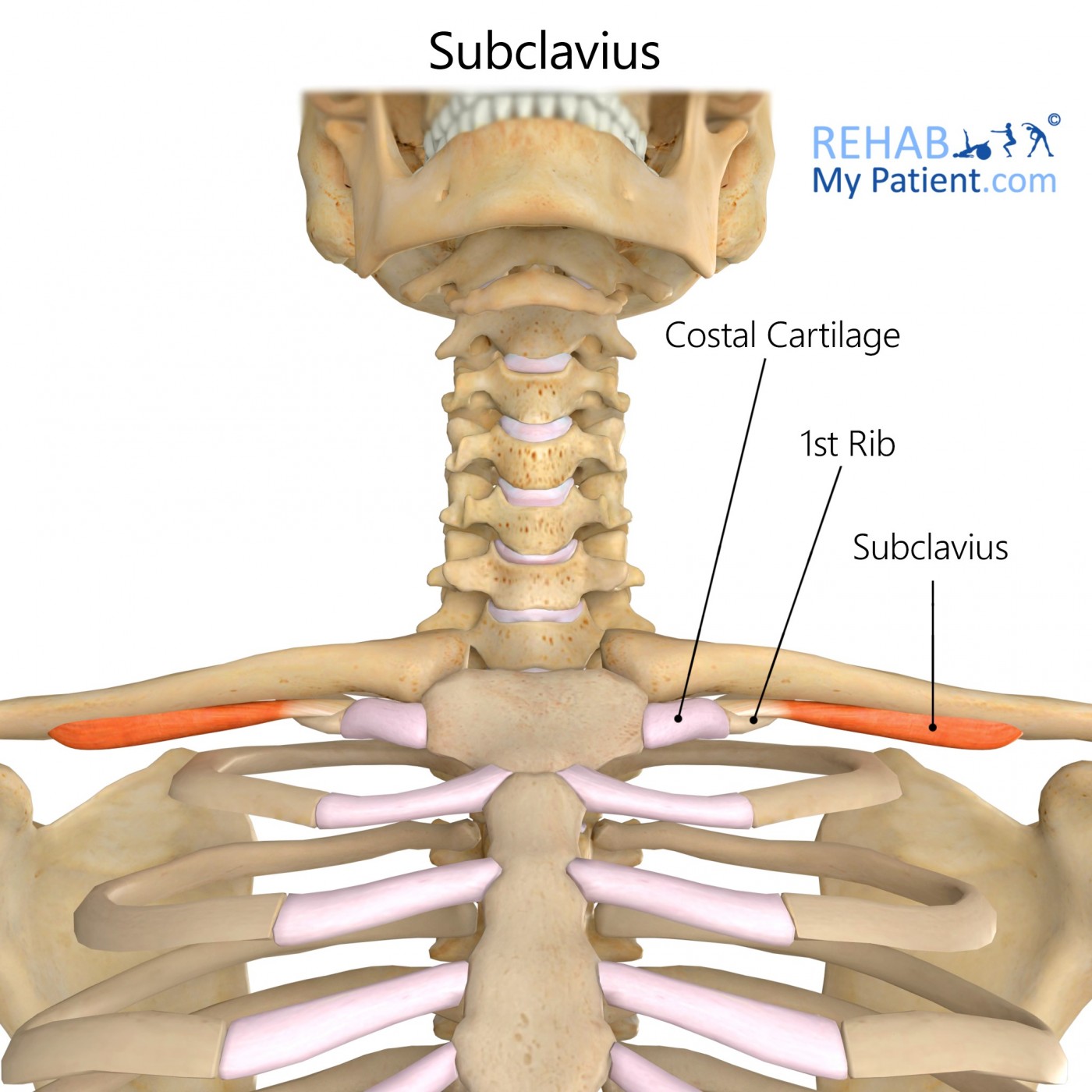
General information
The Subclavius muscle is a small, triangular muscle that is located between the first rib and the clavicle. Along with the pectoralis minor and the pectoralis major, the subclavius helps to make up the anterior wall in the axilla.
Literal meaning
Under key.
Interesting information
The Subclavius muscle functions to move the shoulder downwards and forwards. It also helps to protect the nerve and circulatory bundles beneath, should the collarbone get broken. The collarbone is the most commonly broken longbone within the human body. If this bone has ever been dislocated or broken, problems will occur in the Subclavius muscle. If this happens, the muscle needs to be examined.
Various activities can cause pain in the muscle. Lifting a heavy object can cause a great deal of pain in this muscle. For those who work with their arms outstretched such as on a computer or driving, it could end up causing pain in the Subclavius muscle. Avoid keeping the shoulders rolled forward as this strains the Subclavius muscle. Individuals who sleep on their sides with an arm above their head can strain the muscle and cause further injury.
Origin
Superior surface out of the junction of the first rib and its costal cartilage.
Insertion
Groove found on the interior surface for the middle part of the clavicle.
Function
When the lateral end of the clavicle is depressed, the muscle assists the pectoralis minor as well as the rhomboideus major in a downward rotation for the glenoid cavity in the scapula.
Helps to brace the clavicle into position against the sternum.
Nerve supply
Nerve to the subclavius C5-C6.
Blood supply
Suprascapular artery.
Thoraco-acromial artery by means of the clavicular branch.

Relevant research
Unilateral swelling of the arm as a direct result of vein obstruction without thrombosis is not a common form of venous TOS. Out of 87 patients who have venous TOS, only 21 of those individuals exhibited no signs of thrombosis. The diagnosis and treatment for all of those patients were described: 21 patients that had arm swelling, venograms and cyanosis that demonstrated partial subclavian vein obstructions were all treated with transaxillary re-sectioning of the first rib and venolysis. 18 of those 21 patients reported a good to excellent improvement for their symptoms. Only two people had failures with the treatment.
Sanders RJ, Hammond SL. Subclavian vein obstruction without thrombosis. J Vasc Surg. 2005;41(2):285?290. doi:10.1016/j.jvs.2004.12.022
Subclavius exercises
Alternating floor press
Lie on the floor with two kettlebells next to the shoulders. Position one in place on the chest and then the other one. Make sure to grip the kettlebells using their handle and with the palms facing forward. Extend both arms so the kettlebells are held above the chest. Lower one of the kettlebells by bringing it to the chest and turning the wrist in the direction of the kettlebell that is locked out. Raise the kettlebell and repeat with the opposite side. Complete 10 repetitions on either side for a total chest workout.
Sign Up
Sign up for your free trial now!
Get started with Rehab My Patient today and revolutionize your exercise prescription process for effective rehabilitation.
Start Your 14-Day Free Trial